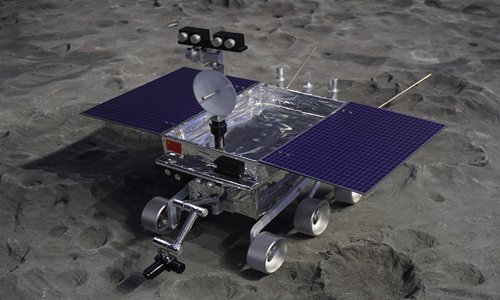
A model of China's robotic lunar probe Chang'e-4 is displayed during the 12th China International Aviation and Aerospace Exhibition, also known as Airshow China 2018, in Zhuhai city, South China's Guangdong Province, 7 November 2018.Photo: IC
China is mulling of establishing an Earth-moon space economic zone by 2050, with insiders expecting the zone to generate $10 trillion a year.
Bao Weimin, director of the Science and Technology Commission of the China Aerospace Science and Technology Corporation, revealed the ambitious plan at a seminar on space economy on Wednesday, media reported Friday.
In a report on developing earth and moon space, Bao shared his thoughts on the huge economic potential in this field and pledged that the country would study its reliability, cost and flight-style transportation system between the Earth and moon, The Science and Technology Daily reported Friday
He pledged to complete basic research and make a breakthrough on key technologies before 2030 and establish the transportation system by 2040. By 2050, China could successfully establish an earth-moon space economic zone, he said.
Many netizens were thrilled by the news, with some saying that "if I can catch a flight to the moon during the rest of my life, I would die without any regrets."
An aerospace scholar told the Global Times on condition of anonymity that by exploring earth-moon space, China can gain a lot, such as developing the space travel industry or conducting experiments on the moon.
As early as 2016, Zhang Yulin, then deputy commander-in-chief of China's manned space program, told media that they had plans to explore Earth-moon space.
In May 2018, China launched a relay satellite to set up a communications link between the Earth and the then planned Chang'e-4 lunar probe, which accomplished the first-ever soft landing on the far side of the moon in January. Chinese scientists and engineers hope the Queqiao satellite will form a communications bridge between controllers on Earth and the far side of the moon.
Aerospace fans predicted that the plan will accelerate many important projects, including the Long March-5 carrier rocket, China's largest launch vehicle, which is expected to be used to send the Chang'e-5 probe in 2020 to bring moon samples back to Earth, and China's heavy-lift carrier rocket, the Long March-9, which is expected to make its first flight around 2030 and will support manned lunar exploration, deep space exploration and construction of a space-based solar power plant.

